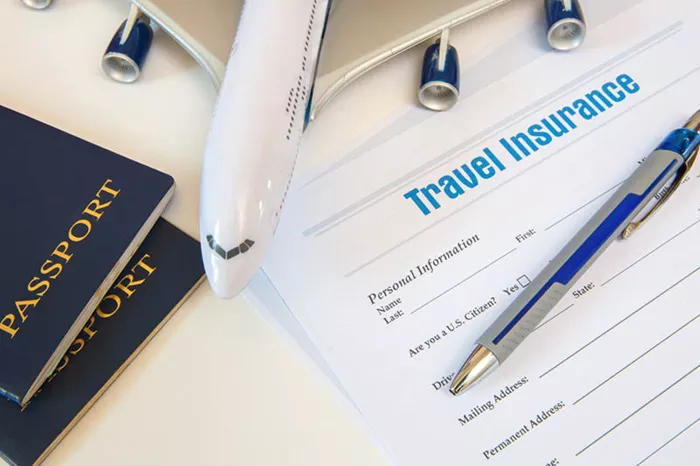In the realm of automotive insurance, liability coverage stands as a fundamental pillar of protection for drivers. It serves as a shield against financial repercussions resulting from accidents for which the insured individual is deemed responsible. In this comprehensive guide, we delve into the intricate workings of liability car insurance, elucidating its definition, types of coverage, operational mechanics, state requirements, coverage limits, cost factors, choosing the right coverage, distinctions from full coverage policies, and its pivotal role in providing legal and financial protection.
Definition of Liability Car Insurance
Liability car insurance is meticulously designed to shoulder the financial burdens arising from damages and injuries that the insured is accountable for causing to others in an auto accident. It serves as a safeguard not only for the policyholder but also for the affected parties, ensuring that they receive adequate compensation for their losses.
Types of Coverage
Bodily Injury Liability: This facet of liability insurance extends coverage for medical expenses, lost wages, and other associated costs stemming from injuries inflicted upon others in an accident where the insured is at fault. It encompasses a wide spectrum of medical and rehabilitation expenses, including hospital bills, surgeries, therapy sessions, and ongoing treatment.
Property Damage Liability: In the event of an accident, property damage liability steps in to cover the costs of repairs or replacement for damage inflicted upon someone else’s property. Whether it be a vehicle, building, or any other structure, this facet of coverage ensures that the affected party is duly compensated for the harm incurred.
How It Works
When an insured individual is involved in an accident where they are deemed at fault, the process of utilizing liability insurance unfolds in a structured manner. Upon reporting the incident to the insurance company, a thorough investigation ensues to ascertain fault and assess the extent of damages and injuries. Once liability is established, the insurance company disburses compensation to the affected parties, thereby alleviating the financial burdens borne by the insured.
State Requirements
It is imperative to recognize that the minimum liability coverage requirements vary by state, thereby necessitating compliance with the regulations stipulated by the respective jurisdiction. Failure to meet these requirements can lead to severe repercussions, including fines, license suspension, and legal liabilities.
see also:How much does accident increase insurance?
Coverage Limits
Coverage limits delineate the maximum amount that an insurance company is liable to pay out for a covered claim. These limits are typically expressed in two figures, representing the maximum amount payable per person for bodily injury and the maximum payable per accident for bodily injury or property damage. It is prudent for policyholders to meticulously evaluate their coverage limits to ensure adequate protection against potential liabilities.
Cost Factors
An array of factors influences the cost of liability car insurance, with each variable playing a pivotal role in determining the premium rates. Factors such as the insured’s driving record, the type of vehicle they drive, their geographic location, and the chosen level of coverage all contribute to the calculation of insurance premiums. By comprehensively assessing these factors, individuals can effectively manage their insurance expenses while securing optimal coverage.
Choosing the Right Coverage
Selecting the appropriate coverage limits necessitates a comprehensive evaluation of individual needs and financial capabilities. While it may be tempting to opt for minimal coverage to minimize premiums, such an approach can expose individuals to significant financial risks in the event of an accident. Therefore, it is imperative to strike a balance between affordability and adequacy, ensuring that the chosen coverage aligns with one’s unique circumstances.
Liability Insurance vs. Full Coverage
It is imperative to distinguish between liability-only insurance and full coverage policies, as they cater to distinct sets of needs and preferences. While liability insurance provides protection solely against damages and injuries inflicted upon others, full coverage policies encompass additional facets such as comprehensive and collision insurance, thereby extending coverage to the insured individual’s vehicle as well.
see also:How is comprehensive car insurance calculated?
Legal and Financial Protection
The significance of liability insurance in safeguarding against legal and financial ramifications cannot be overstated. In the absence of adequate coverage, individuals risk being embroiled in protracted legal battles and saddled with exorbitant financial liabilities. By procuring liability insurance, individuals fortify their defenses against unforeseen contingencies, thereby fostering peace of mind and financial security.
In essence, liability car insurance serves as a cornerstone of automotive insurance, offering indispensable protection against the uncertainties of the road. By comprehensively understanding its nuances and intricacies, individuals can navigate the realm of insurance with confidence, ensuring optimal protection for themselves and others alike.
FAQs about Insurance and Loss Protection
1. Does insurance protect against loss?
Yes, insurance provides protection against various types of loss, depending on the specific policy and coverage purchased. Insurance is designed to mitigate financial risks by transferring the potential burden of loss from an individual or business to an insurance company. When covered events occur, such as property damage, accidents, or liabilities, insurance policies provide compensation to help the insured recover from the losses incurred.
2. How do insurance companies determine loss?
Insurance companies use various methods to determine the extent of a loss and the amount of compensation owed to the policyholder. This process typically involves assessing the value of the property or assets lost or damaged, investigating the circumstances leading to the loss, and verifying the coverage provided by the insurance policy. Insurance adjusters may inspect damaged property, review documentation, gather evidence, and consult with experts to evaluate the extent of the loss and determine an appropriate settlement amount.
3. What insurance covers loss or theft?
Several types of insurance coverage can protect against loss or theft, depending on the nature of the property or assets involved:
Homeowners insurance: Typically covers loss or theft of personal property, such as furniture, electronics, and clothing, up to the policy’s specified limits.
Renters insurance: Similar to homeowners insurance but designed for tenants renting a property. It provides coverage for personal belongings against loss or theft.
Auto insurance: Comprehensive coverage can protect against theft of a vehicle, as well as damage caused by vandalism or other non-collision events.
Business insurance: Commercial property insurance can cover loss or theft of business assets, inventory, equipment, and supplies.
Additionally, specialized insurance policies may be available for specific types of property or assets prone to theft, such as jewelry insurance, art insurance, or cyber insurance to protect against theft of digital assets.
4. Is insurance protection against possible loss?
Yes, insurance provides protection against the financial consequences of possible loss or unforeseen events. By paying premiums, policyholders transfer the risk of potential loss to an insurance company, which agrees to indemnify them in case covered events occur. Whether it’s property damage, personal injury, liability claims, or other risks, insurance policies offer peace of mind by providing financial security and helping individuals and businesses recover from unexpected setbacks without suffering significant financial hardship.
You Might Be Interested In





















